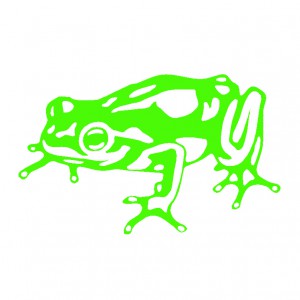HOW TO DESIGN TO DISRUPT – FROG’S ADVICE
October 10, 2014
 Frog Design’s Patrick Kalaher’s advice at the Sogeti Executive Summit 2014 is based on the following six observations and four conclusions:more–>
Frog Design’s Patrick Kalaher’s advice at the Sogeti Executive Summit 2014 is based on the following six observations and four conclusions:more–>
Observations
- Device design is breaking long-held rules.
- Mobile networks are glitchy.
- The IoT is messy and complicated, and failure can be expensive.
- Pervasive computing is starting to offend people.
- Connected device scenarios are hard work.
- Emergent behavior has unintended real-world consequences.
Conclusions
- It’s a Dirty New World.
- You can’t design for every possible failure state.
- The IoT is a team sport.
- To be disruptive you have to design for disruption.
How . . . ?
- Don’t design the whole thing.
- Design for modular collaboration.
- Be thoughtful about the value chain and the service chain.
- Design at three scales: unit scale, local scale, planetary scale.
- Adopt a Baysian strategy:
- Guess at the answer, acquire data and adjust strategy. Repeat!
- Include the hackers.
The Three Scales
- Unit Scale: constrained systems for specialized needs; constrained by compute, network, or power capabilities.
- Local Scale: edge compute systems for real time needs; general purpose computing platforms.
- Planetary Scale: redundant, parallel compute systems ideally suited for parallel processing and distributed storage needs; Big Data.
Sparking Business Transformation with Disruptive Thinking
To compete today, business leaders need a revolution in thinking: a steady stream of disruptive strategies and unexpected solutions to stay ahead of the game. In his book Disrupt: Think the Unthinkable to Spark Transformation in Your Business, leading innovation consultant and frog design Fellow Luke Williams demonstrates how to generate those strategies and deliver those solutions.
Williams outlines a way of thinking that will help business leaders to produce and implement ideas that alter the trajectory of a business and revive stagnant markets. Disrupt explores why the most unexpected ideas draw the least competitors and offer the greatest potential. The book shows how to combine fluid creativity with analytical rigor in a simple five-stage process for successfully disrupting any market:
- Craft a disruptive hypothesis: Be wrong at the start to be right at the end.
- Define a disruptive market opportunity: Look where no one else is looking.
- Generate several disruptive ideas: Make the ordinary unexpected.
- Shape them into a single, disruptive solution: Avoid novelty for novelty’s sake.
Make a disruptive pitch that will persuade internal or external stakeholders to invest or adopt what you’ve created. Under-prepare the obvious, over-prepare the unusual.

 English | EN
English | EN 